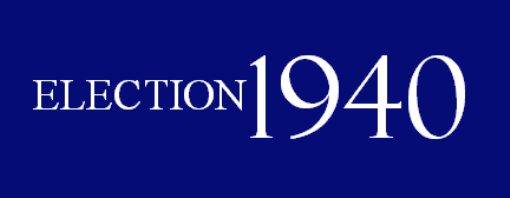The Pittsburgh Press (November 4, 1940)

SOME ELECTION FACTS
By Bertram Benedict, Editorial Research Reports
The Presidential election on next Tuesday will be the 39th in the history of the United States of America.
26th in which all the presidential electors are chosen by the voters. Earlier, some of the states had let their legislatures pick the electors. The last of these was South Carolina in 1836.
24th in which the states vote for President on the same day, according to an act of Congress passed in 1845. Before then the states had voted on different days, in some cases more than a month apart.
35th in which two or more major parties contest the Presidency. There was no opposition to Washington on his first or his second election. In the elections of 1820 and 1824, only one party was functioning.
37th contested by the Democratic Party. This party was first known as the Republican or Democratic-Republican Party. Under Andrew Jackson his party opponents began to call themselves Republicans, then National Republicans, in protest against Jackson’s dictatorial policies. Then the Jackson men began to call themselves simply Democrats. The National Republicans became the Whigs, who won two presidential elections before dying out in 1852.
22nd contested by the Republican Party, which was formed in 1854 by a coalition of Whigs, Free-Soilers, and Democrats who opposed the spread of slavery.
1st in which a President has run for as third consecutive term. Theodore Roosevelt ran for a third non-consecutive term in 1912.
The Third Term Try
7th in which a major party candidate has run for the third time. Jefferson was defeated once, Jackson once, Van Buren twice (the second time on a minor party ticket), Cleveland once (between his first and second terms), William Jennings Bryan all three tomes, and Theodore Roosevelt once (the first time, he ran for Vice President).
35th in which the presidential electors vote for one candidate for President and another for Vice President. Before the 12th Amendment was ratified in 1804, electors did not vote for Vice President, but voted for two men for President. The runner-up for President was named Vice President.
6th in which women all over the United States are eligible to vote on the same basis as men. The federal women’s suffrage Amendment was ratified in 1920. In the preceding years, many states had given women the right to vote, by state action.
32nd with only two major candidates. In past elections, sizable votes were given to third party candidates as follows:
-
1832 – Anti-Masonic Party. Carried one state, ran well in several others. Its presidential candidate was a Mason, William Wirt.
-
1848 – Free Soil Party. Former President Van Buren was its candidate.
-
1856 – American (Know-Nothing Party). Anti-alien. Did well chiefly because in some states it was the only opposition to the Democratic Party. Its presidential candidate was former President Millard Fillmore.
-
1860 – Rump Democratic ticket, hopelessly splitting the Democratic vote. Also the so-called Union Party (it carried three states).
-
1892 – Populist (People’s) Party. Carried four states, ran second in others. Four years later, it endorsed the Democratic candidate, William Jennings Bryan
-
1912 – Progressive Party of former President Theodore Roosevelt. Doing better than Taft, the Republican nominee, he ensured the election of Wilson.
-
1924 – Third party of Senator La Follette, the elder. He carried one state, and ran second in a number of others, getting almost 5,000,000 votes.
This tabulation does not include such minor parties as the Greenbackers in 1876 and 1880, the Socialists, or the Prohibitionists, all of whom failed to get as many as 1,000,000 votes or to carry a single state. That is true also of Representative Lemke, the candidate endorsed by Father Coughlin in 1936; Lemke ran third in every state.
8th for All States
8th in which 48 states have voted. No states have been admitted to the Union since 1912, when Arizona and New Mexico came in. In the first election, in 1789, only 10 of the original states voted. Two had not yet ratified the Constitution (Rhode Island and North Carolina); in New York the legislature could not agree on provision for voting.
28th in which the major party nominations were made by national party conventions. At first the party nominations were decided upon by the party members in Congress; then nominations were suggested by state legislatures.
18th contested by a Prohibition candidate. In 1896, the money issue split the Prohibition Party and two Prohibition candidates were in the field – one for the gold standard, one for Free Silver.
10th contested by the Socialist Party. In 1924, the Socialists endorsed the candidacy of La Follette the elder. The high-water mark of the Socialist vote was in 1912, when Eugene V. Debs got about 6% of the total popular vote. In 1936, the Socialist vote was less than ½ of 1%.
4th contested by a Communist candidate.
Inaugural Changed
2nd in which the man elected President will begin his term on the following January 20. Until the 20th Amendment was made part of the Constitution in 1933, the President elected early in November was not inaugurated until the following March 4.
20th won by a Democrat, if Roosevelt should be elected. The Democrats so far have won 19 out of 36 elections, for a batting average of .528. Since 1856, the first election contested by the present Republican Party, the Democrats have won five out of 21 elections, for a batting average of .238.
15th won by a Republican, if Willkie should be elected. The Republicans have so far won 14 out of 21 elections, for a batting average of .667.